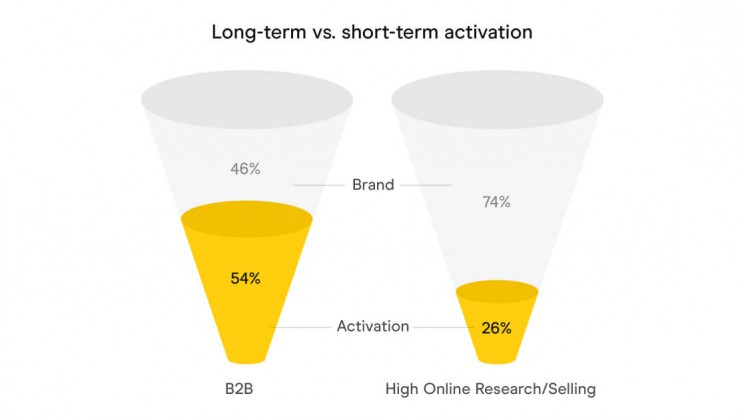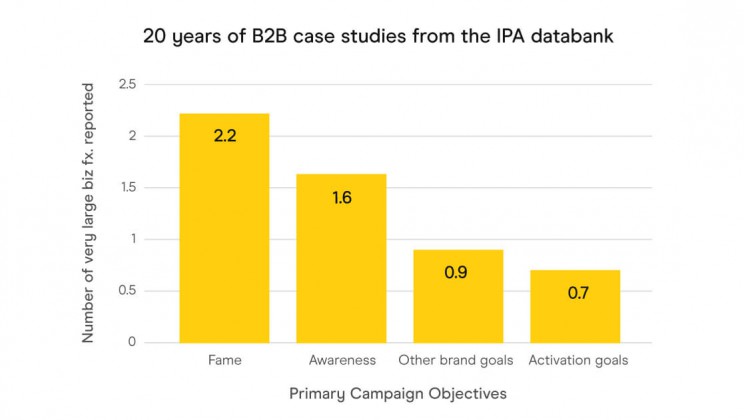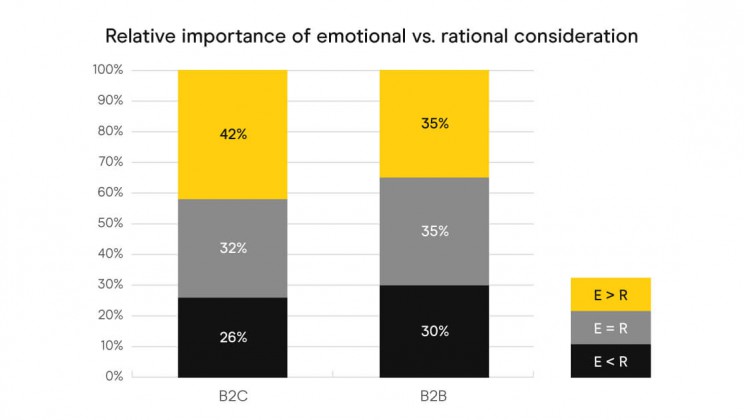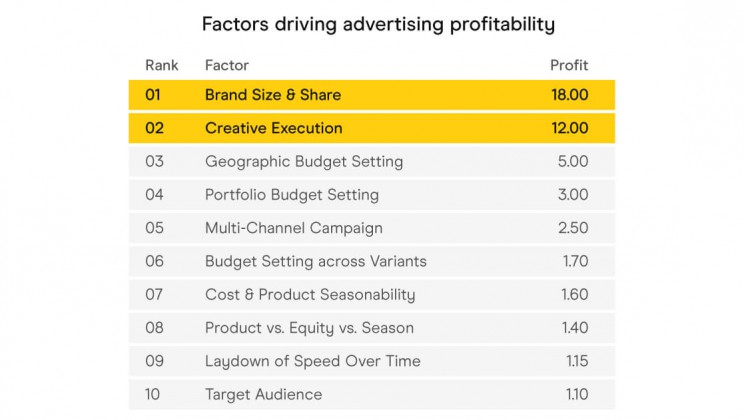There’s long been a view held by many agencies and clients that B2B marketing is completely different to B2C. That the rules that define what works and what doesn’t are completely different.
Taking that one step further, and it’s also the case that many, think B2B marketing is the boring bit – the poor relation. The work that people do because they can’t do B2C. It’s a mindset that still exists today as much as it did when I first overheard the conversation over 20 years ago between a group of creative teams.
At the heart of this argument is creativity, or in many cases the lack of. So, what is it that is driving this issue and more importantly what do we know about creativity in B2B? Is it a must-have to drive business success… or is its impact a myth?
The issue of B2B creativity
There are many reasons behind this issue and unfortunately much of it is just habit. It’s a view that’s been established over many years and as we all know, habits can be very hard to break. Some people will say that it just comes down to attractiveness – surely its more exciting to work on an airline or alcohol brand than it is to work on one that makes widgets for the engineering sector? Does this mean the best creative minds are lured by the bright lights of B2C whilst B2B gets to keep the leftovers?
The simple answer to that is no. The real root cause is the mis-held belief that ‘customers’ in B2B are different than ‘consumers’ in B2C. That they behave differently, are influenced through different means and somehow go through an evolutionary change every time they step through the door of that widget factory.
This has led to marketing strategies that have focussed on the communication of rational information only and in particular a focus on short-term sales as opposed to long term brand building. And by its very nature, that means a lack of creativity.
So, what’s the fix? Well, realising that we are all humans whether at work or at home as a start. The same pre-programming, biases and heuristics will influence our decision-making in work or at play.
That means for all marketeers and agencies, the secret to success is knowing your audience inside out. Not just what decisions they make, but why they make them. Get the research right and it opens up a world of creative possibilities to really make an impact.
The evidence for change
Why is creativity is so important? There is a wealth of knowledge out there from the Institute of Practitioners in Advertising, WARC, Gartner, the B2B Institute and LinkedIn to name a few. All of them support need brand building and aligned to this, the importance of creativity to make that happen. The evidence is quite compelling.
Brand building
Over the last 10 years this has often been overlooked as brands have focussed on the immediate satisfaction of short-term activation. This has been driven considerably by the digital revolution and the ability to automate activity and get real time data feedback. A LinkedIn ROI study showed that only 4% of B2B Marketeers measure activity beyond 6 months.
Yet all the evidence clearly supports the need to balance the long-term and the short-term. Brand building in B2B is critical and by ensuring you get the budget balanced right you can really get your creative thinking caps on.

Brand fame
Brand fame or in simpler terms, getting your brand talked about and generating conversation, is the most successful strategy to drive business growth. The below chart tracks over 20 years of B2B case studies from the IPA databank.

A great example of this was for Volvo Trucks and their ‘Epic Split’ campaign to maximise awareness amongst a broader audience of people who influence sales. Over 100m view on YouTube, a significant increase in brand recall and awareness with sales in the following period rising by 23%
Emotion
This is just as important in B2B as it is in B2C – they play just as much a part in stirring the senses. The IPA has always pushed the impact of emotion in advertising and the significantly higher hard and soft business effects generated. The rule is just the same for B2B.

This is further backed by the B2B Institute and System 1 who analysed advertising for B2B brands and used their proven star ranking methodology to understand growth impact. The startling result is that 75% of ads scored 1 star or less, well below average.
Financial returns
The financial returns of a marketing campaign can be increased 12 times through a successful creative execution. In fact, according to the B2B Institute it is by far the most important factor outside of brand size and share.

Five top tips to move your business forward
If your organisation isn’t open to creativity in B2B, you’re missing out. It’s an essential part of driving growth and profit. Brands that steal a march on their competitors are only going to benefit more. There’s five rules to help break that habit:
- Stop thinking in terms of customers, prospects, consumers etc. And start thinking ‘human beings’.
- Re-adjust your budgets to ensure the right mix of brand building and short-term activation – and make sure you show the evidence in the boardroom to get buy in.
- Stop hypertargeting. It kills creativity and the evidence shows it. In the words of the B2B Institute and LinkedIn, it’s the greatest media mistake of the last decade.
- Stop measuring everything. Just because you can, doesn’t mean you should. Think about what’s important and remember some effects take a long time to show through.
- Get yourself out of your comfort zone. Make a conscious decision to do things differently. If you’re presented with a creative idea that makes you uncomfortable, chances are it’s probably the right path to take.
We are TrunkBBI, an award-winning integrated marketing agency based in the UK. We have been helping ambitious brands to achieve their goals since 2011 with a broad range of expertise. If you want to light a creative fire under your B2B marketing, get in touch or take a look at some of our client work to see our creativity in action.


